Why Public Art
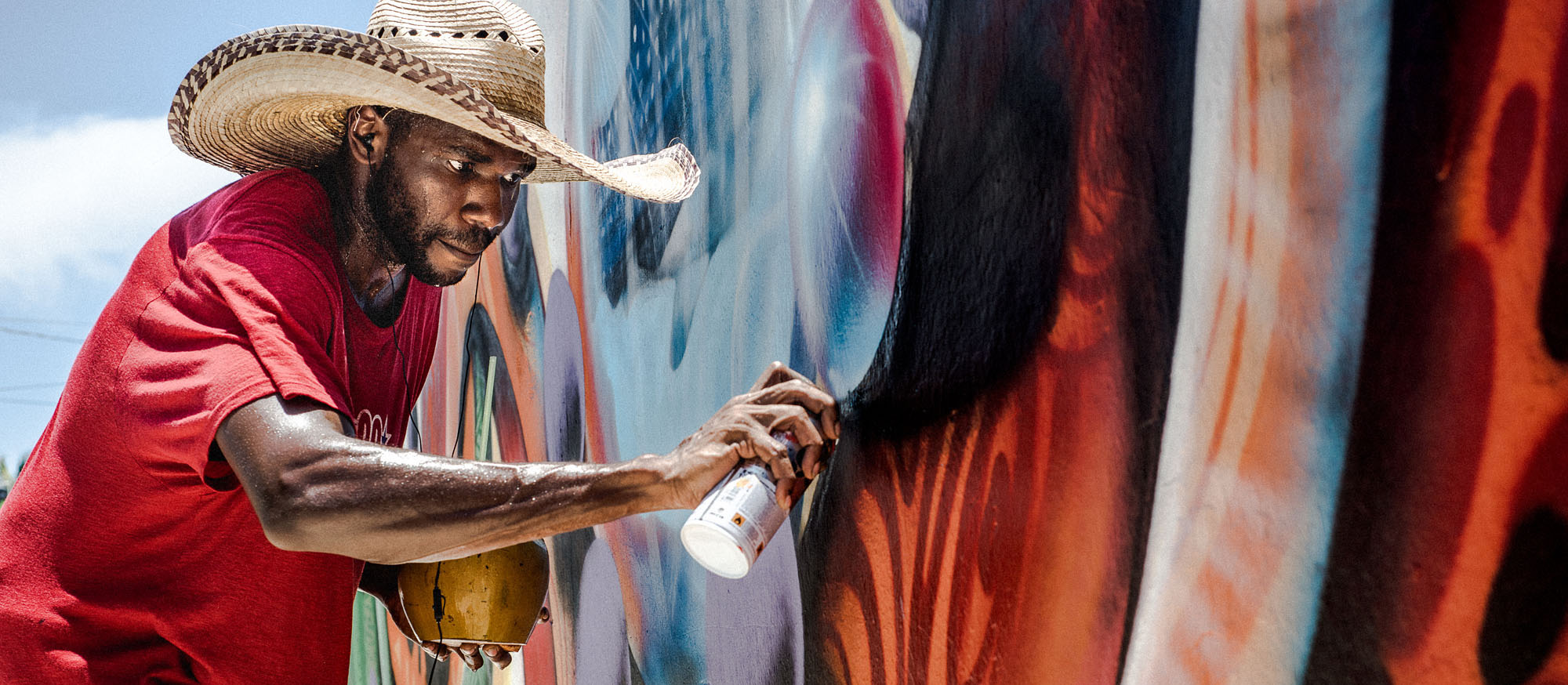 Supporting ARTivist Nosego in Isla Mujeres, Mexico.
Supporting ARTivist Nosego in Isla Mujeres, Mexico.
The earliest known artwork is a mural. The 40,000-year-old handprints in the Sulawesi Caves of Indonesia send us a simple message that endures to this day: “I am here.”
Murals are powerful. They act as a visual springboard for stories, ideas, beliefs, and histories. We’ve always used them to make public statements about who we are and what we care about. And our compulsion to make our mark on walls continues to this day.
In an era of digital saturation and information overload, murals are more important than ever. Public, accessible and grassroots, they cut through the dialogue to make simple, powerful statements that endure much longer than thoughts on a Twitter feed.
We are at a critical moment in history where the crisis of our environment must be heard. Muralists have the unique power make public environmental statements that transcend cultural and linguistic barriers, endure the test of time and inspire us to make a change.
Muralists can visually tell the stories, facts and scientific realities that let our planet say: “I am here,” and “I need help.”
Five years ago, UNESCO recognized the crucial role that art plays in sustainable development. The Hangzhou Declaration urged governments, civil society and the private sector to harness the power of creative industries to address the world’s most pressing environmental challenges.
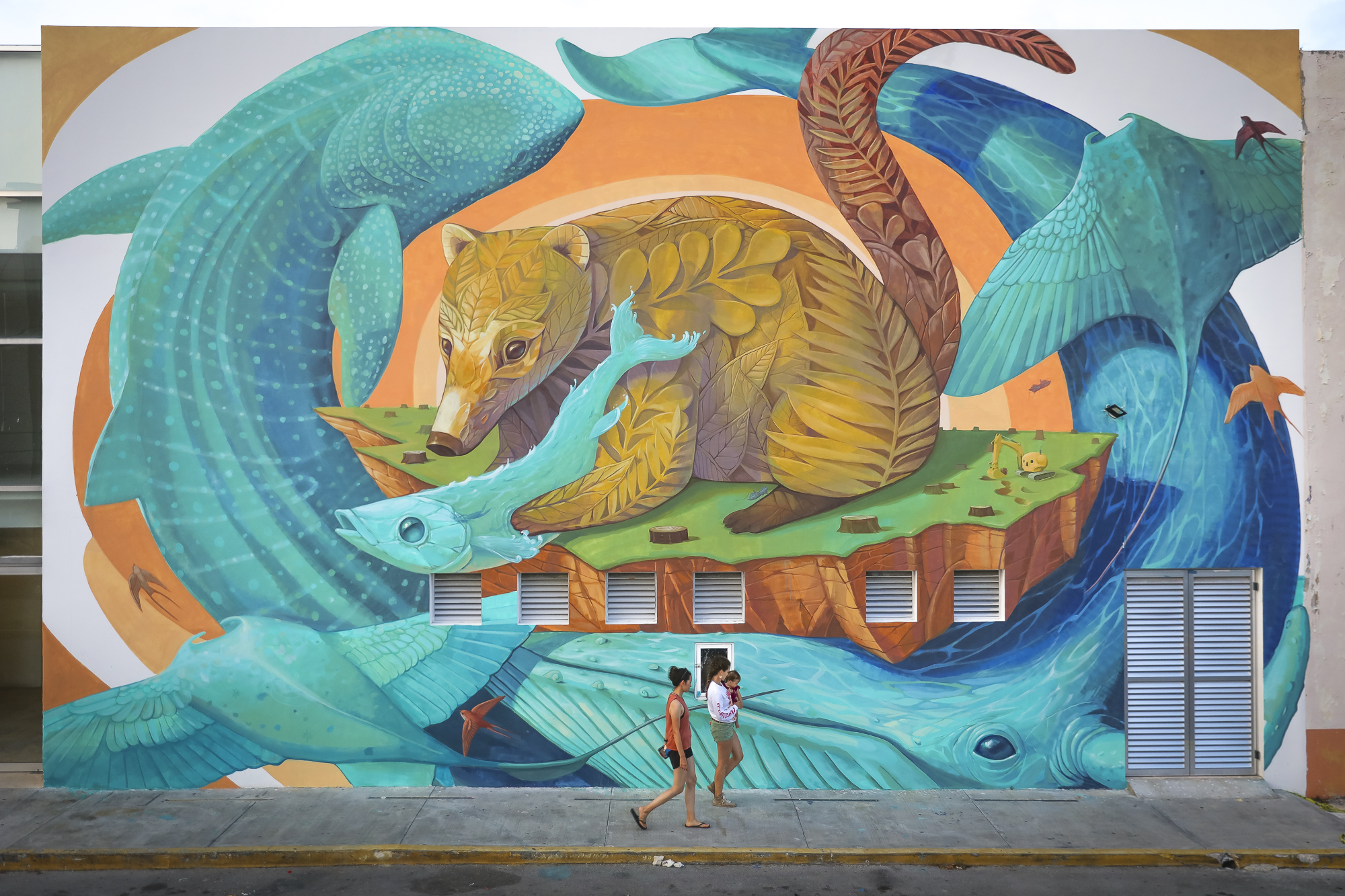
“Su Vida Es Nuestra Vida” by supporting ARTivists Alegria del Prado in Cozumel, Mexico.
“Culture is precisely what enables sustainability – as a source of strength, of values and social cohesion, self-esteem and participation.”
Irina Bokova, Director General, UNESCO
By placing art and culture at the heart of public policy, the Hangzhou Declaration recognized two things. Not only can art draw attention to important problems, but it also plays a significant role in facilitating solutions.
Sustainable development and the creative arts might seem an unlikely pairing when you picture sterile walls inside a gallery. But art that is made for the public space is naturally bound up in the local identity of a place. It becomes part of how we navigate, how we remember landmarks or even how we interact with other people. Interestingly, studies show that public areas with more art have lower crime rates and create increased feelings of personal safety. The research studies, conducted in New York, USA and Ipoh, Malaysia show the influence that more art in the streets can have on our mood and behavior (Sakip, Bahaluddin and Hassan, 2016 and Snyder, 2009).
We use art to catalyze social and economic change for the protection of our oceans, creating transformations that are more than aesthetic. It’s an approach to sustainable development championed by the ‘Placemaking’ movement. In creative placemaking, urban planners and developers collaborate with other sectors, using art to shape the physical and social character of a community. Successful placemaking makes a community not only more creative but also more liveable, diverse and economically viable. (Markusen and Gadwa, 2010).
Sea Walls aims to change attitudes towards ocean conservation. By doing so, they generate local jobs and attract unrelated business and workers to communities they engage.
Initiatives like Sea Walls are not only creating a more beautiful public space but one that is more prosperous, more socially cohesive and ultimately, more environmentally sustainable.
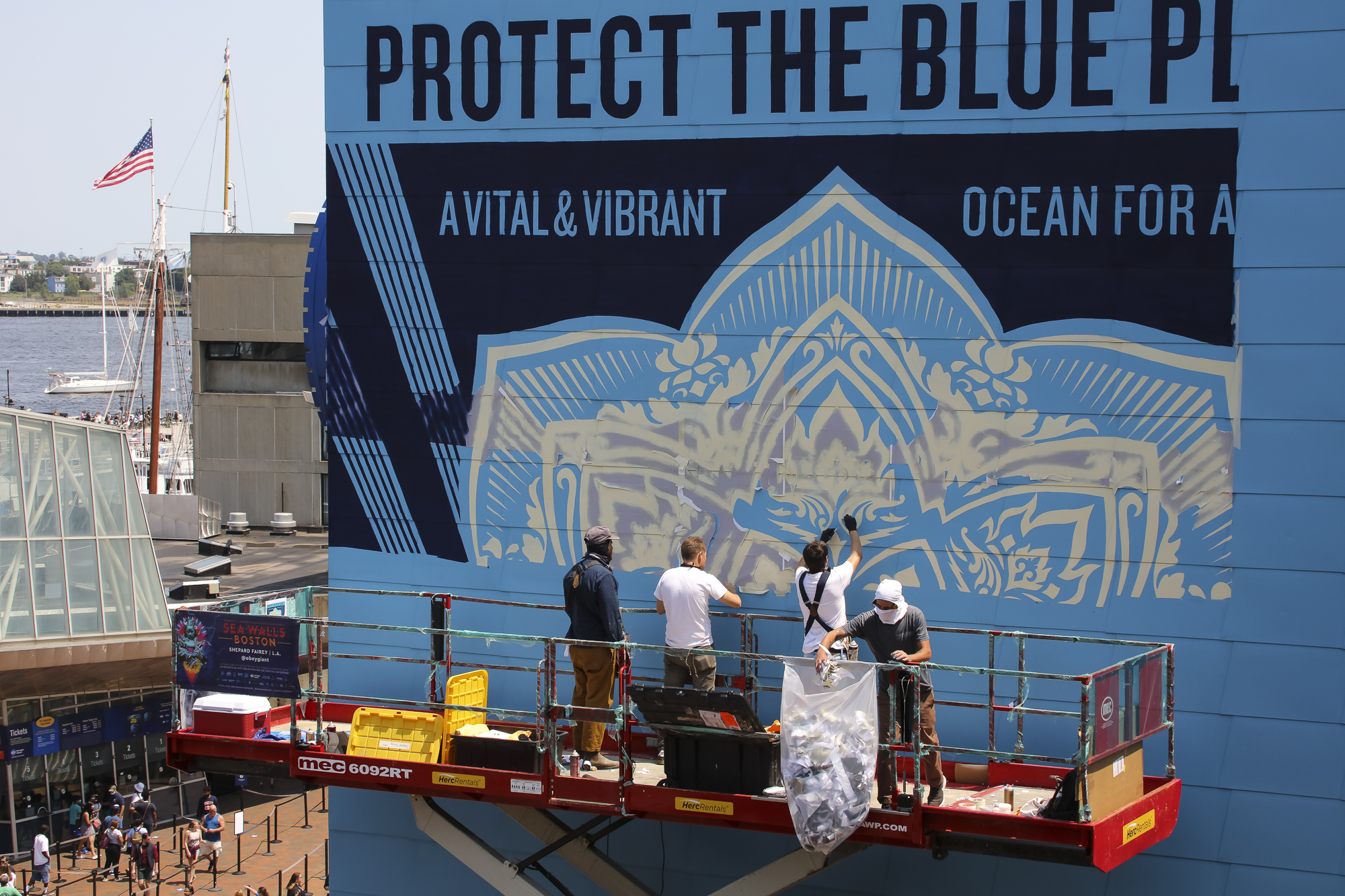
Supporting ARTivist Shepard Fairey in Boston, Massachusetts
“The role of an artist is to make revolution irresistible.”
Toni Cade Bambara
Street art has always been associated with activism. The streets are where artists fight to reclaim the public space from the economic agenda of advertisers. But while Banksy stenciling paradise posters on the Gaza Strip certainly makes a point, street artists are doing so much more for our environment beyond drawing attention to adversity.
‘Artivism’ is where art meets action. It’s a communicative approach that recognizes the power of art to overcome cultural and linguistic barriers. (Goris and Hollander, 2017). ARTivists use art in public spaces to mobilize ideas, generate understanding and most importantly, show society how to change.
In the environmental crisis we face today, ARTivists play a vital role. They can do what a scientist with a line graph often can’t – distill important scientific realities and present the facts in a way we can all understand. Be it rising ocean temperatures or prolific plastic pollution, eye-catching and symbolic art in public places is what can cut through the dialogue to deliver powerful environmental messages.
‘Coral Conch Shell’ by supporting ARTivist Meggs is a perfect example of Artivism. His mural visually represents WWF findings that we have already lost 27% of the world’s coral reefs. We will loose up to 60% of these reefs over the next 30 years if our destructive habits persist.
Artists like Meggs aren’t just playing with symbols, colors and lines, they are harnessing scientific knowledge. His work is a call to action for greater environmental stewardship, while also presenting an innovative visual representation of the very real scientific scenario faced by endangered coral reefs.
At PangeaSeed Foundation, we embrace the message from underwater explorer Jacques Cousteau: “People protect what they love, they love what they understand, and they understand what they are taught.”
Before any of our Sea Walls: Artists for Oceans projects launch, artists are given an information pack educating them about ocean issues specific to the area they are painting. They are urged to take ownership of a topic, researching it heavily to become a spokesperson both during the project and beyond.
When a wide range of artists with all kinds of stylistic approaches are mobilized in this way, environmental messages are more unique and inspiring than a billboard could ever be.
In an increasingly interconnected civic space, where disciplines can cross-pollinate, and ideas can transcend borders, hierarchies, and regimes, the artist can do so much more than capture an image of a polar bear on an iceberg.
The artist is not just a storyteller, but a public campaigner: not just a creative but a scientist, an engineer, a social worker and a revolutionary too.
They are not propositioning a better future, but part of the movement of change to create one.
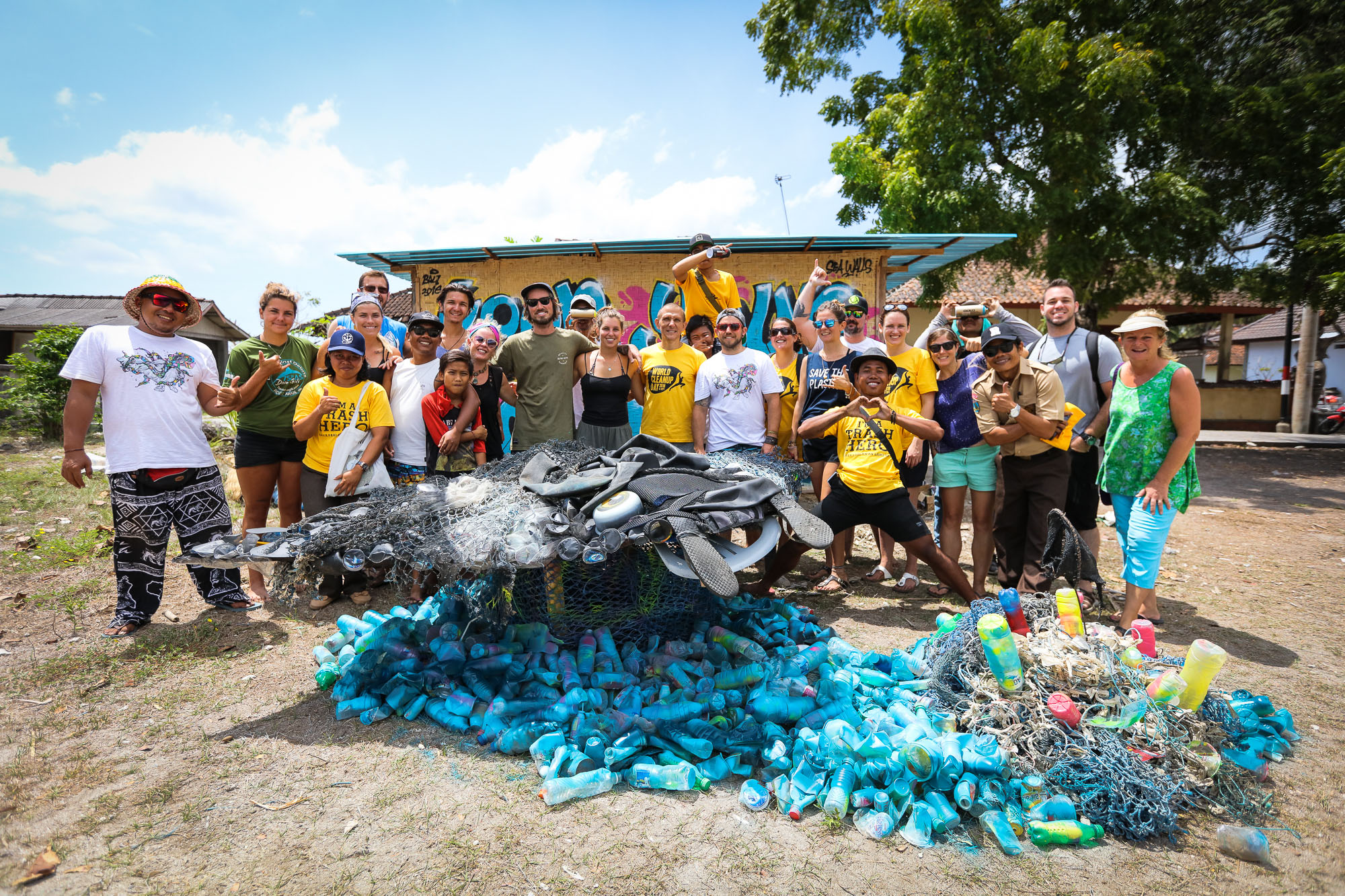
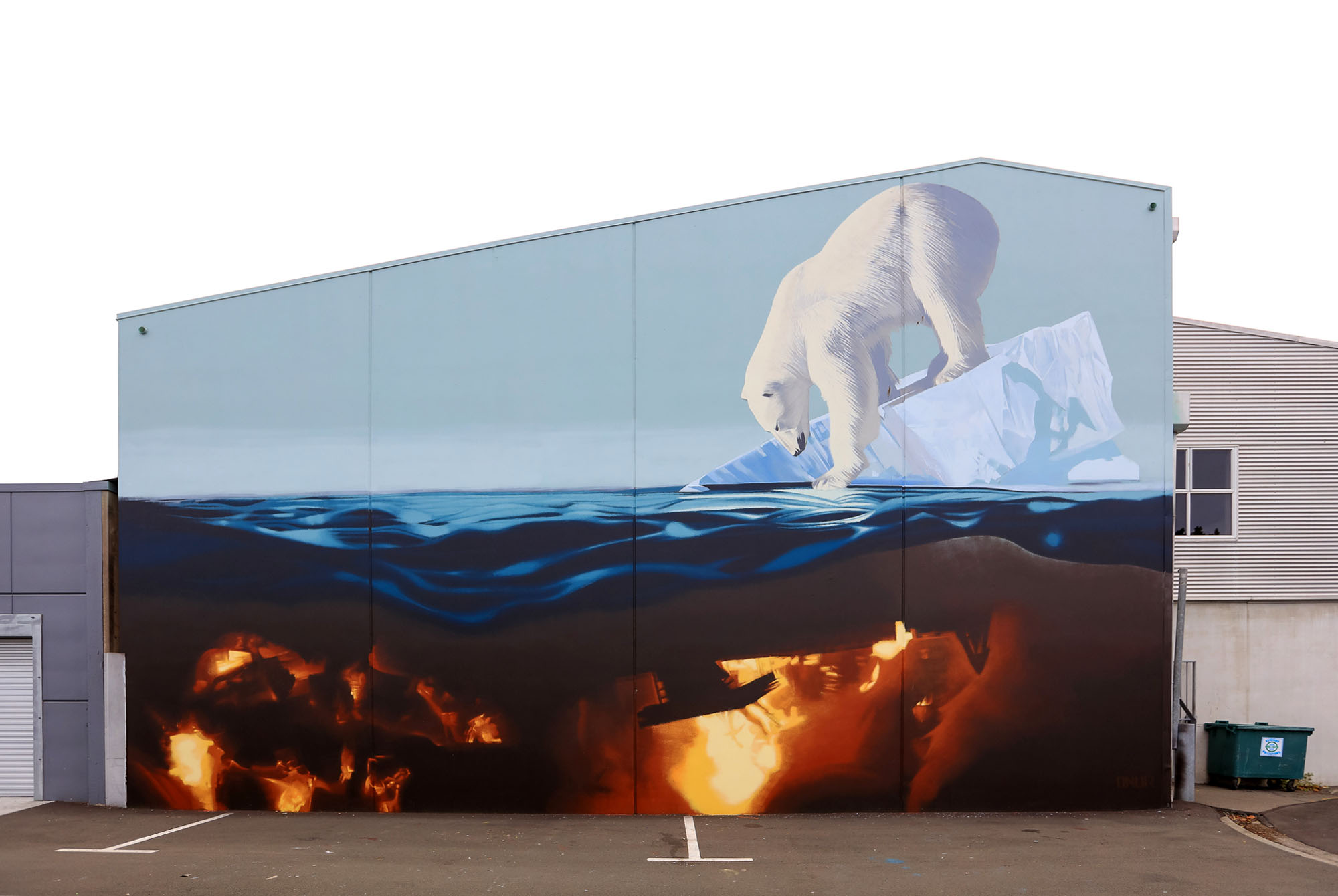
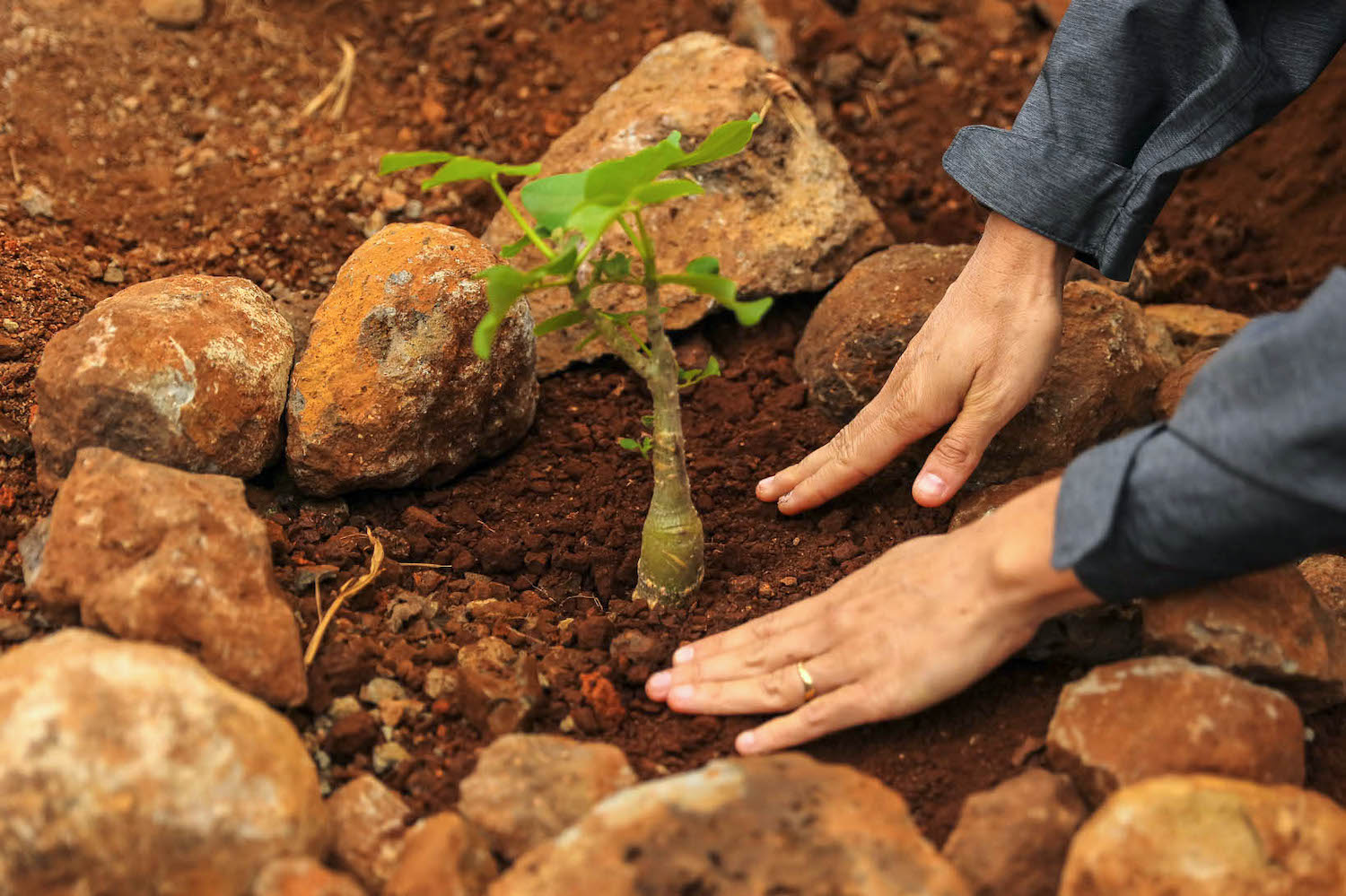
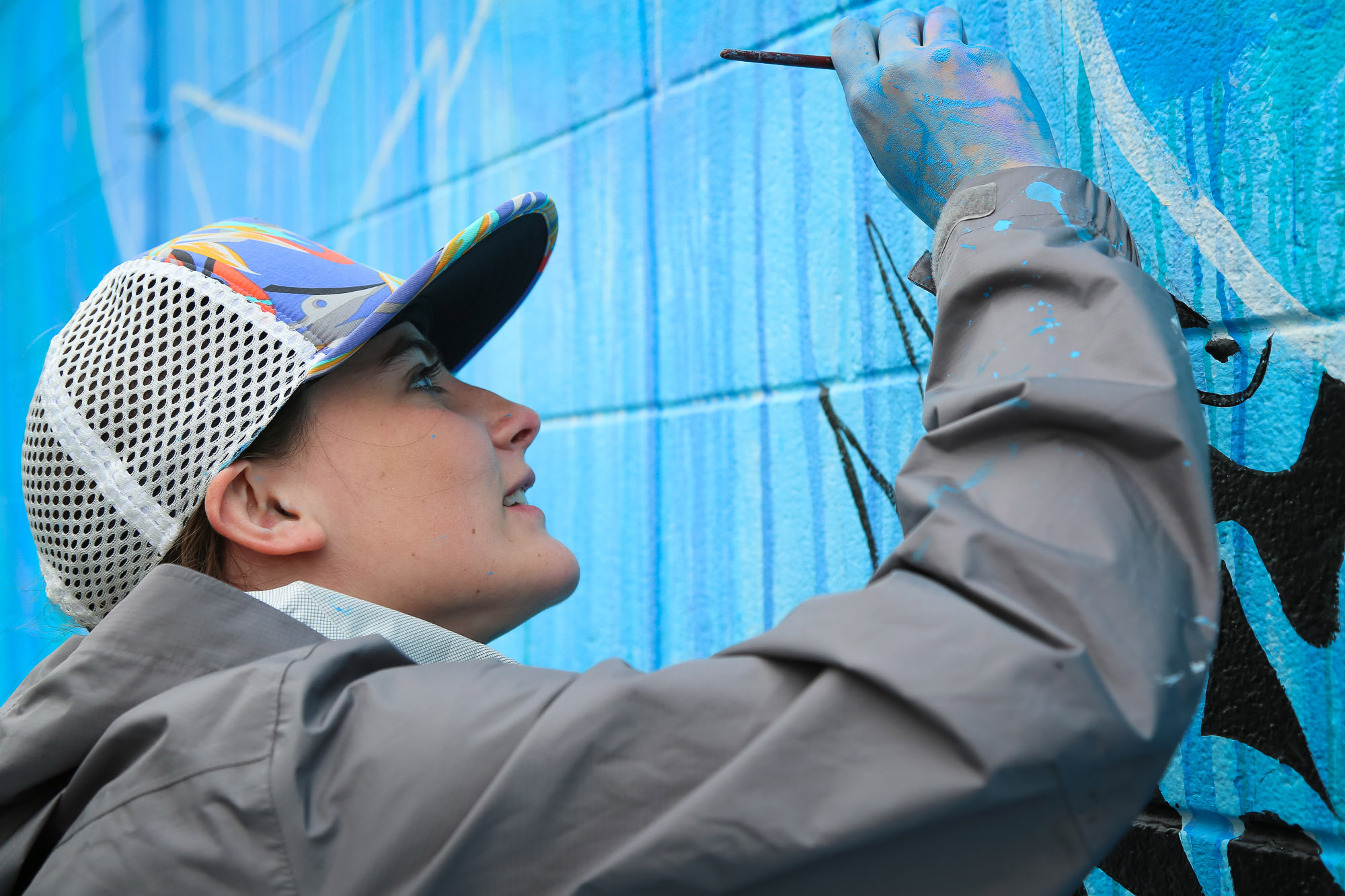
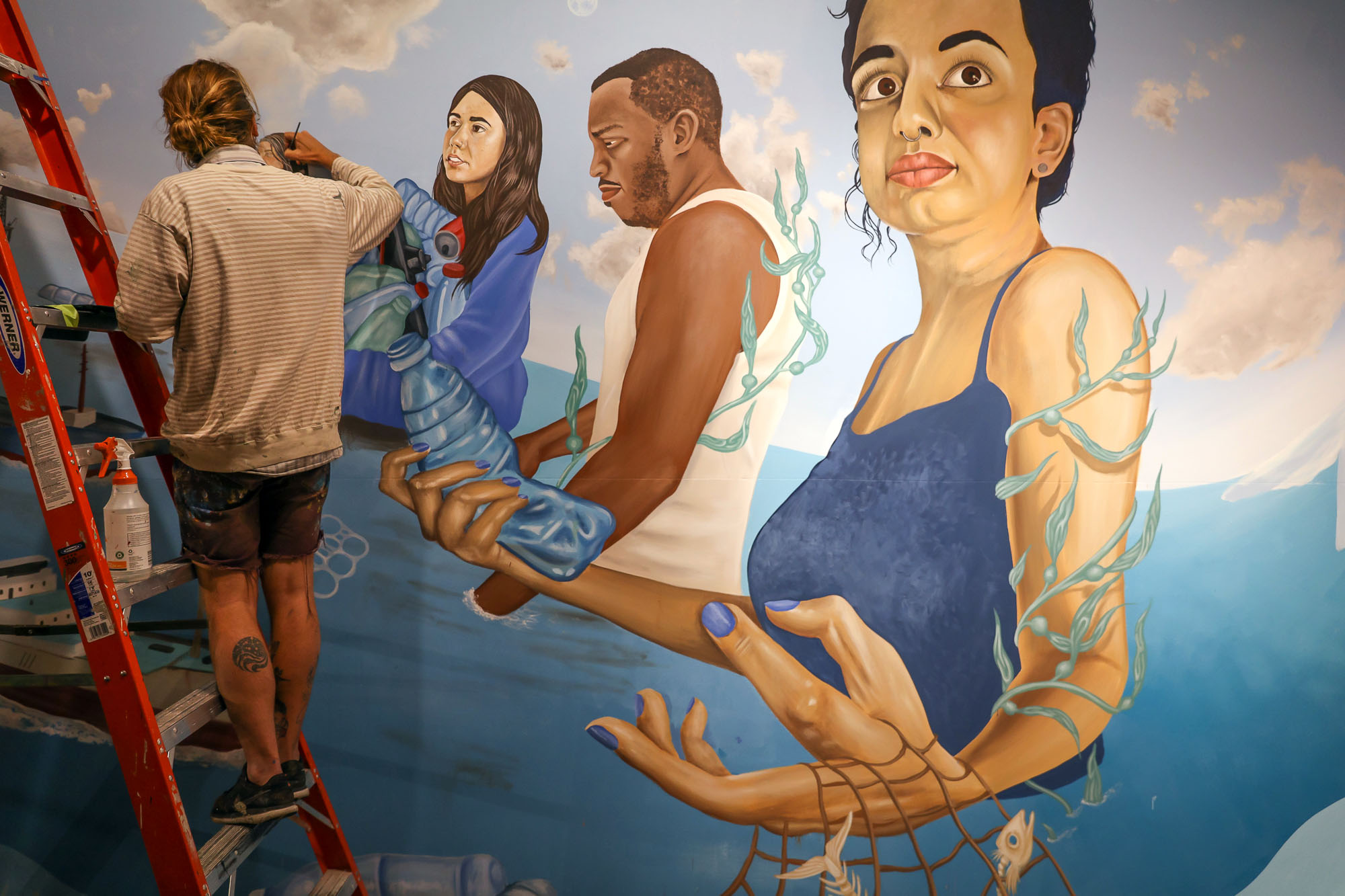
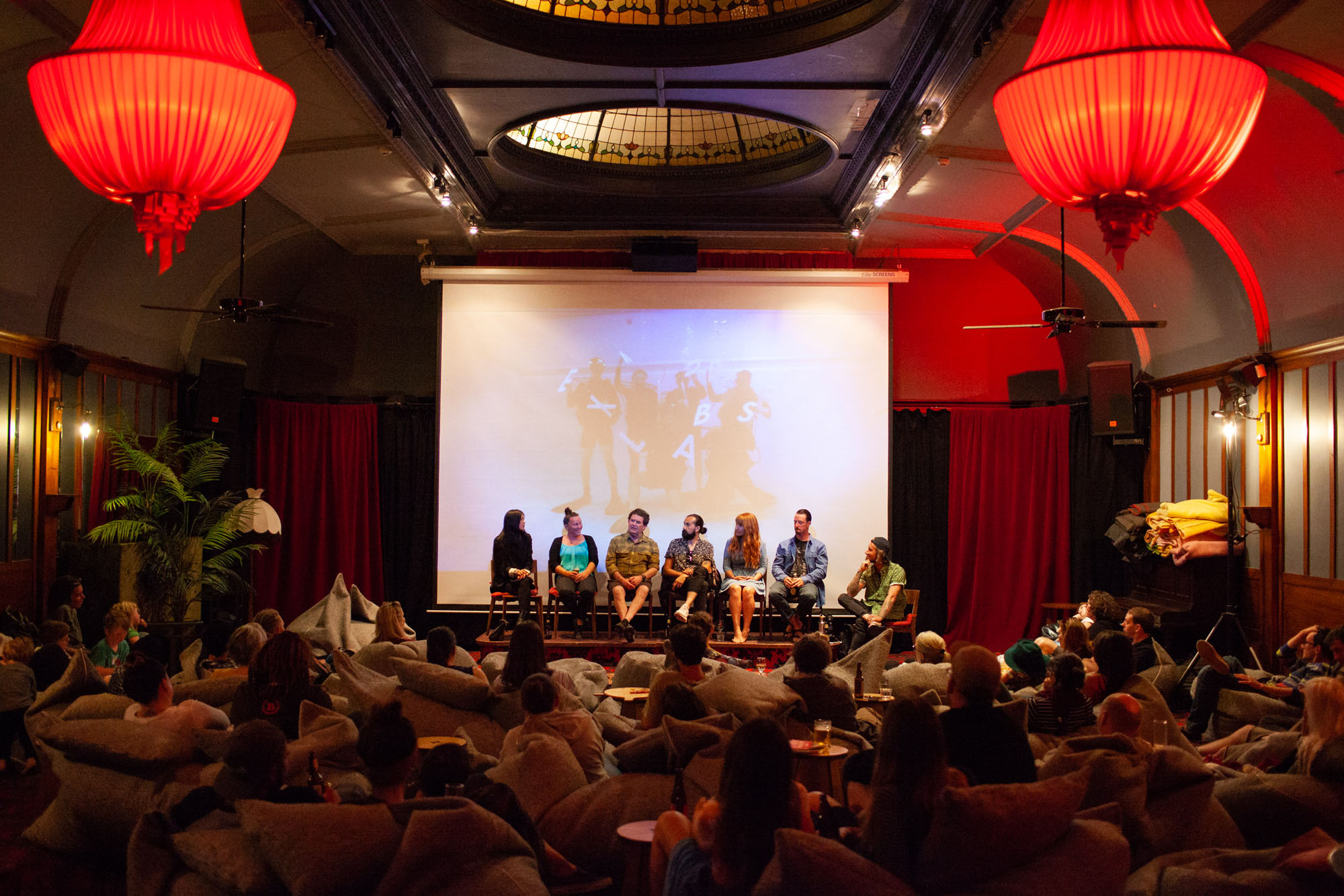
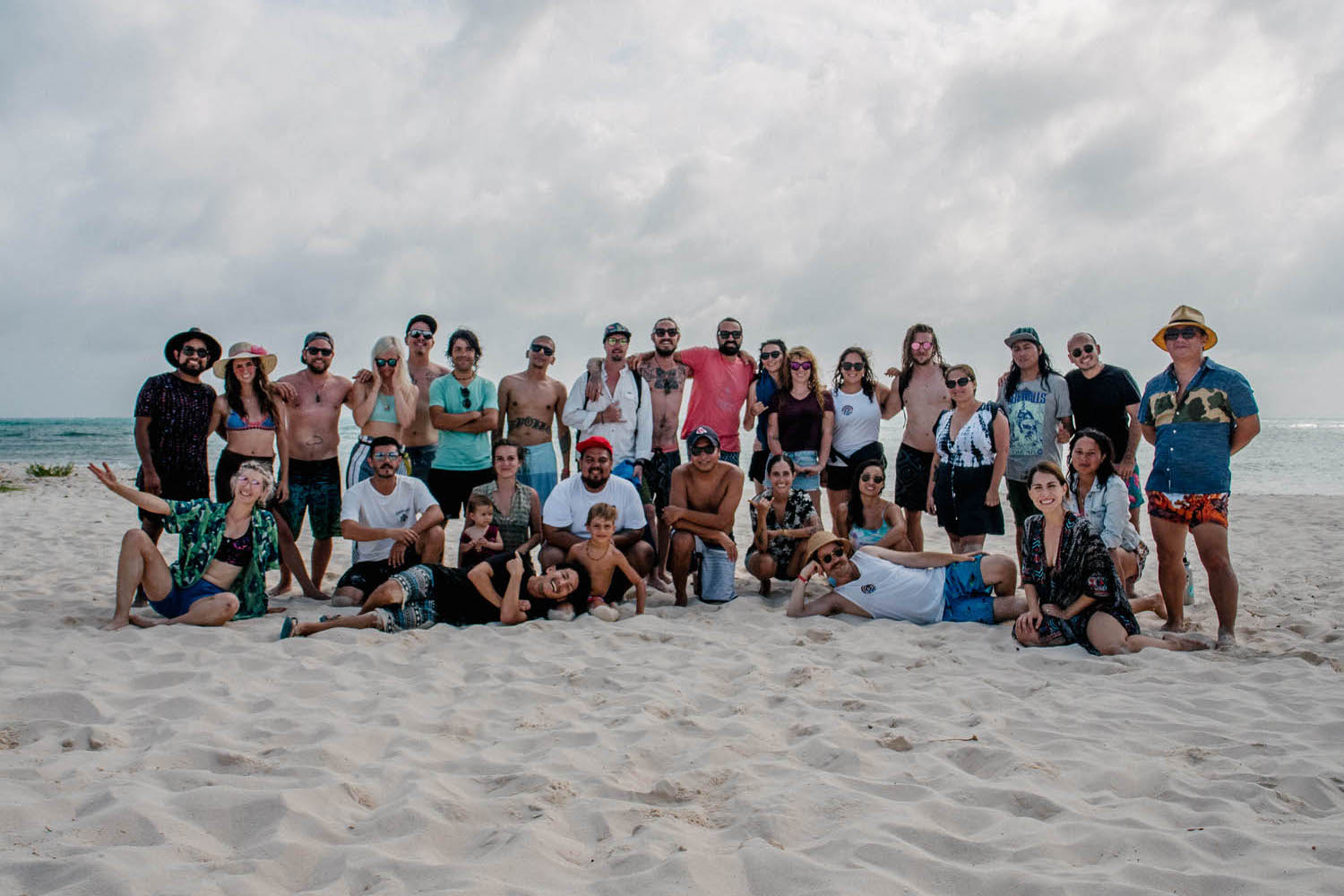





 Supporting ARTivist Nosego in Isla Mujeres, Mexico.
Supporting ARTivist Nosego in Isla Mujeres, Mexico.
